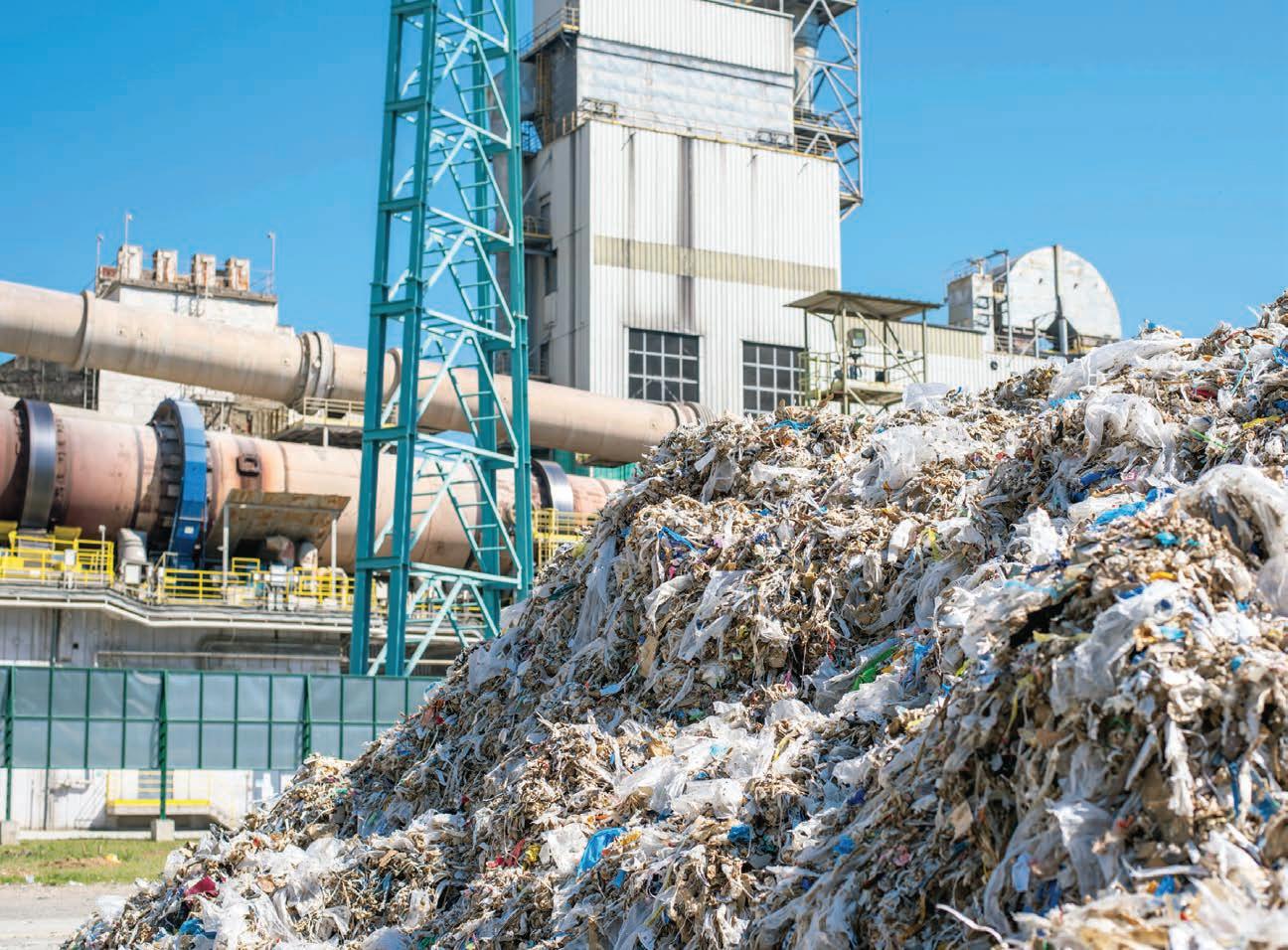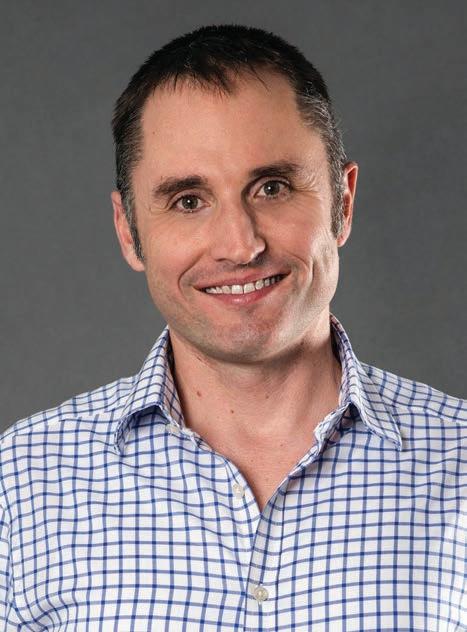
7 minute read
UP FRONT
Waste-to-energy can play a role alongside other recycling technologies in providing an end-of-life waste alternative to landfilling.
Potential energy
THERE’S A GENERAL ACCEPTANCE THAT WASTE-TO-ENERGY HAS A ROLE TO PLAY IN AUSTRALIA’S FUTURE. WHAT THAT ROLE WILL BE REMAINS DIVISIVE. WASTE MANAGEMENT REVIEW LOOKS AT THE STATE OF PLAY.
Australia has set an ambitious target of recovering 80 per cent of waste by 2030.
Export bans on waste streams, investment in infrastructure to create an end market for recycled products and increasing rates of recycling, are helping the nation move closer to creating a sustainable, circular economy.
But, there will always be some waste that cannot be recovered.
Almost every developed country in the world has Waste-to-Energy (WtE) plants to recover the energy stored within residual waste.
Australia is decades behind and while there has been an acknowledgement that WtE has a role in the nation’s future, not everyone is on the same path.
In 2021, Victoria and New South Wales released plans for future use of WtE in their respective states.
While governments try to “get the balance right”, industry leaders claim the regulation is stifling developments. While some local communities are embracing WtE, others are battling to keep facilities out of their backyards.
Dr Daniel Roberts, Research Director, Energy Technologies for CSIRO’s Energy Business Unit, says WtE is a “contentious issue” within Australia.
“A lot of the misunderstanding goes back to the 1970s when Japan had a landfill challenge and responded by burning waste in dedicated facilities,” Daniel says. “Technology at the time was immature and there were large-scale plumes of dioxins and other pollutants.
Daniel says there are many best practice WtE plants across Europe that are currently operating well within strict emission guidelines.
The plants produce heat and power that offset fossil fuel use and, he says, evidence points to an increase in the rate of recycling in areas where modern WtE plants are built.
“Many people in those countries see it as a significant benefit, especially in Scandinavia where WtE provides heat to the community during winter,” said Dylan. “In Germany and Scandinavia, and elsewhere across Europe, they’ve had this technology employed for decades and are now requiring operators to find emerging technology to meet requirements in a circular economy context. In Australia, the mindset is based on the ’70s-style technology. There’s now a lot of experience around the world to get this right. There is so much evidence that those things that people quote as problems are not really problems if the plant is well designed and well-run.”
The New South Wales Government’s Energy From Waste Infrastructure Plan released in 2021 makes clear where new thermal waste to energy facilities can and cannot proceed, identifying the West Lithgow Precinct, Parkes Special Activation Precinct, Richmond Valley Regional Jobs Precinct and Southern Goulburn-Mulwaree Precinct as priority locations to host these operations.
Announcing the plan, Minister for Energy and Environment Matt Kean, said it is the final piece of the waste management puzzle and builds on the NSW Waste and Sustainable Materials Strategy and Plastics Plan released earlier in 2021.
“This is about getting the balance right between supporting investment in NSW, driving a circular economy and reducing carbon emissions, while also respecting the concerns of local
communities,” he says. “The Plan ensures new thermal waste-to-energy projects are co-located with transport links and complimentary industries and kept away from high-density residential areas.”
Gayle Sloan, Chief Executive Officer of the Waste Management and Resource Recovery Association of Australia (WMRR) believes restricting WtE projects to a defined land parcel “doesn’t make sense”.
“Part of energy-from-waste is that it needs to be able to join the grid. It also makes sense to co-locate where waste is being generated,” she says.
“We’re not looking at over development, we’re looking at appropriate development. We’re trying to build infrastructure that gives back.
Gayle says there are as many as seven EfW proposals at varying stages of development within NSW. A number of them may still go ahead if they meet certain criteria around location, displacement of dirty fuel and social license. However, she says, the NSW policy could jeopardise millions of dollars of investment.
“This doesn’t just impact project proponents, it means future jobs supporting these projects have
now been lost in both regional and metropolitan areas, along with the significant current and future investment in the NSW economy.”
Parkes Shire Mayor Ken Keith has welcomed the focus on Parkes and believes identifying priority areas will “give certainty for community and investment”.
Ken says the location within the Parkes Special Activation Precinct is perfect from a logistics perspective,
Gayle Sloan Chief Executive Officer of the WMRR
Dr Daniel Roberts, Research Director, Energy Technologies for CSIRO’s Energy Business Unit.
being at the intersection of national rail networks.
Although the latest filtration technology makes energy from waste virtually pollution-free, wide buffer zones are built into the 4800-hectare precinct design. Air quality and odour will be monitored across the precinct.
Water used during the process will be captured and recycled at a precinct level and on-site. Any heat and steam generated as part of the process could be used for processing and manufacturing of agricultural value-adding industries, while electricity can be fed into the national grid or used within the precinct to power colocated industry.
“This is a proven technology and plays a role alongside other recycling technologies in providing an end-oflife waste alternative to landfilling in keeping with circular economy principles,” Ken says.
However, Lithgow Council continues to battle the decision to include Lithgow as a priority precinct and has made representations to the Deputy Premier, the Minister for Environment and senior bureaucrats that the plan not advance.
“As it stands, we see this plan as currently being more about addressing the problem of Sydney’s residual waste challenge than energy production or job creation,” a council spokesperson says.
“The council is concerned that this could potentially open the floodgates, marking Lithgow as an area that will accept Sydney’s waste. There is no apparent upside for the

host community with no evidence provided of any real positive economic impact from hosting such a facility. All this plan does, in its current form, is shift the problem to the four cities that are slated to host these EfW facilities.
“There are a number of recent examples where the NSW government has crafted programs and initiatives to support new economies in regional settings such as for the REZs and hydrogen hubs. This approach will likely deliver local benefits of jobs and investment to offset the impacts. We feel a similar approach needs to be taken here because local communities are understandably mistrustful that there will be benefits.
“We are pleased that the advancement of the plan has been slowed. We are hopeful that this indicates that more time and effort will be invested in consulting with the communities and having a regard for their perspectives. We also hope that, together, the NSW Government and the four councils can work to truly explore the potential for significant economic benefits from such facilities – at the local level.”
Daniel says social justice concerns are difficult to counteract. He hopes that an operational WtE facility in Australia will help to alleviate community apprehension.
“People who have had experience with these things tend to be much more accepting of them. Having a plant working in Australia will be a good opportunity to increase that level of familiarity.
Ken Keith Parkes Shire Mayor
We see opportunities for change

REMONDIS Australia supports 15,000+ commercial and industrial customers with waste collection, processing, resource recovery and disposal solutions – including landfill. REMONDIS has long been at the forefront of clean energy generation from waste, operating progressive waste, water and recycling services in 30+ countries. Here in Australia we see opportunities to convert non-recyclables into clean energy, and we have the scale andexpertise to make it happen.

T 13 73 73 // remondis-australia.com.au











